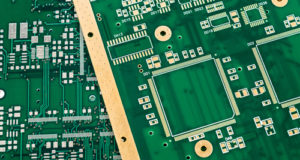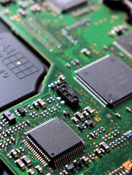You might be wondering what solder mask is and why it’s important. Solder masks are a very important part of protecting a PCB. Solder mask, or solder resister is a thin covering that protects the PCB from oxidation. It also prevents solder bridges from forming between solder pads that are close together. One example of other ways that solder masks can be used effectively by companies are how solder masks are traditionally green but are also available in different colors. The Different colors can be used to tell apart revisions easier.
If you have a revision made and already have one board green then the revision done using two white boards, you can tell the difference just by looking at it. The color of the solder masks has no effect on the performance of the PCB itself. However, the difference between the colors is the resolution of the board will be different. Colors like red and blue match the iconic green PCB in resolution. Black and yellow solder masks however have significantly less resolution than green and the clear solder masks have greater resolutions.
 There are many theories why solder masks were originally green. One of the reasons was because when the solder mask was first produced, the base resin was a brownish yellow and the hardener was a muddy brown. When you combined these two components to form the solder mask, it turned green. Another theory was because green has been proven by many scientists that the color is the most visible and noticeable to the human eye. Colors are just different wavelengths and yellow and green are the wavelengths that are most easily noticeable under normal light. Green is the easiest to see, and easy on the eyes so they won’t tire the human out. This factor helps assemblers and quality control inspectors so maybe that is why green is the iconic color that the image of a PCB has come to accept.
There are many theories why solder masks were originally green. One of the reasons was because when the solder mask was first produced, the base resin was a brownish yellow and the hardener was a muddy brown. When you combined these two components to form the solder mask, it turned green. Another theory was because green has been proven by many scientists that the color is the most visible and noticeable to the human eye. Colors are just different wavelengths and yellow and green are the wavelengths that are most easily noticeable under normal light. Green is the easiest to see, and easy on the eyes so they won’t tire the human out. This factor helps assemblers and quality control inspectors so maybe that is why green is the iconic color that the image of a PCB has come to accept.




